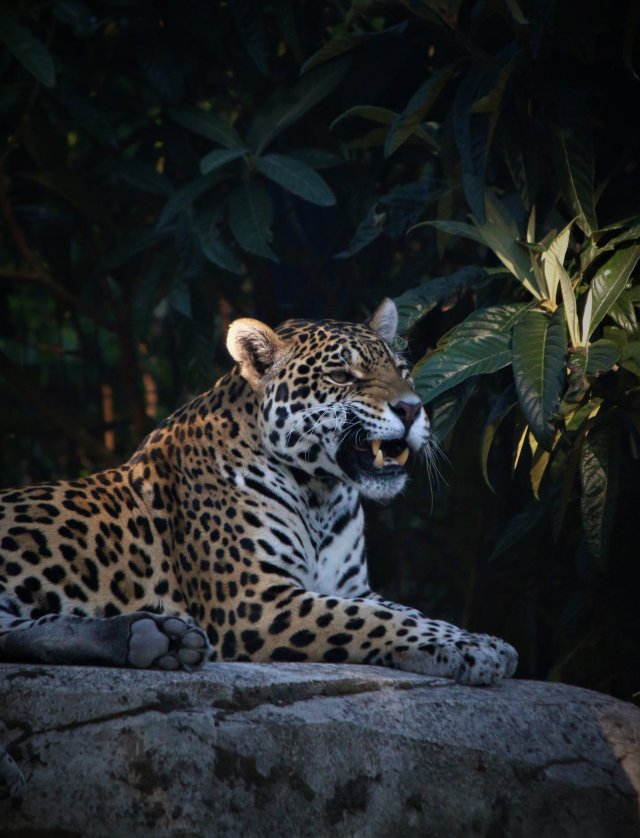8 Ways to Enrich the Lives of Jaguars in Captivity
Lives of Jaguars in Captivity
Keeping wild animals in captivity is a complex and controversial topic. While it is ideal for animals to live in their natural habitats, there are instances where captivity is necessary for conservation, research, and education purposes. One such animal that often finds itself in captivity is the majestic jaguar. As the largest big cat in the Americas, jaguars are not only a symbol of power and beauty but also an important part of our ecosystem. In this article, we will explore eight ways to enrich the lives of jaguars in captivity, ensuring their well-being and promoting their conservation.
1. Providing Ample Space
One of the most crucial aspects of jaguar captivity is providing them with enough space to roam and exercise. Jaguars are solitary animals that require large territories in the wild, so it is essential to replicate this as much as possible in captivity. Enclosures should be spacious, allowing jaguars to engage in natural behaviors such as running, climbing, and exploring.
2. Creating Naturalistic Environments
Jaguars thrive in diverse habitats, including rainforests, swamps, and grasslands. To enrich their lives in captivity, it is important to recreate these natural environments within their enclosures. This can be achieved by incorporating trees, rocks, water features, and vegetation that mimic their wild habitats. Providing hiding spots and elevated platforms also allows jaguars to exhibit their natural behaviors.
3. Offering Varied and Stimulating Diet
In the wild, jaguars are opportunistic hunters with a diverse diet that includes mammals, fish, reptiles, and birds. To ensure their well-being in captivity, it is crucial to provide a varied and stimulating diet that mimics their natural feeding habits. This can include whole prey items, such as rabbits and chickens, as well as enrichment activities that encourage hunting behaviors, such as hiding food or using puzzle feeders.
4. Implementing Environmental Enrichment
Environmental enrichment plays a vital role in keeping jaguars mentally and physically stimulated in captivity. This can be achieved through the use of various enrichment techniques, such as puzzle feeders, scent trails, and novel objects. Enrichment activities should be regularly rotated to prevent habituation and maintain the jaguars’ curiosity and engagement.
5. Providing Social Interaction
While jaguars are primarily solitary animals, they do engage in social interactions during mating and raising cubs. In captivity, it is important to provide opportunities for socialization, especially during breeding programs. Careful introductions and monitored interactions with compatible individuals can help fulfill their social needs and promote natural behaviors.
6. Offering Opportunities for Mental Stimulation
Jaguars are intelligent animals that require mental stimulation to prevent boredom and promote their overall well-being. Providing them with opportunities for problem-solving, such as puzzle feeders or training sessions, can help keep their minds active and engaged. Training sessions also serve as a form of mental and physical exercise, strengthening the bond between the jaguars and their caretakers.
7. Encouraging Natural Behaviors
Allowing jaguars to exhibit their natural behaviors is essential for their physical and psychological health. Enclosures should be designed to facilitate climbing, swimming, and other activities that jaguars would engage in the wild. Providing them with access to water features, such as pools or streams, allows them to cool off and engage in their natural swimming behaviors.
8. Promoting Conservation Education
One of the most significant ways to enrich the lives of jaguars in captivity is by using their presence as an opportunity for conservation education. Zoos and wildlife sanctuaries can educate visitors about the importance of jaguar conservation, the threats they face in the wild, and the efforts being made to protect them. By raising awareness and inspiring action, these institutions can contribute to the long-term survival of jaguars in their natural habitats.
Summary
Lives of Jaguars: Enriching the lives of jaguars in captivity is a multifaceted endeavor that requires careful consideration of their natural behaviors, needs, and conservation goals. By providing ample space, creating naturalistic environments, offering varied and stimulating diets, implementing environmental enrichment, providing social interaction, offering opportunities for mental stimulation, encouraging natural behaviors, and promoting conservation education, we can ensure the well-being of jaguars in captivity while also contributing to their conservation in the wild. It is our responsibility to provide the best possible care for these magnificent creatures and work towards a future where they can thrive in their natural habitats.
Read More About Jaguars From Wikipedia





